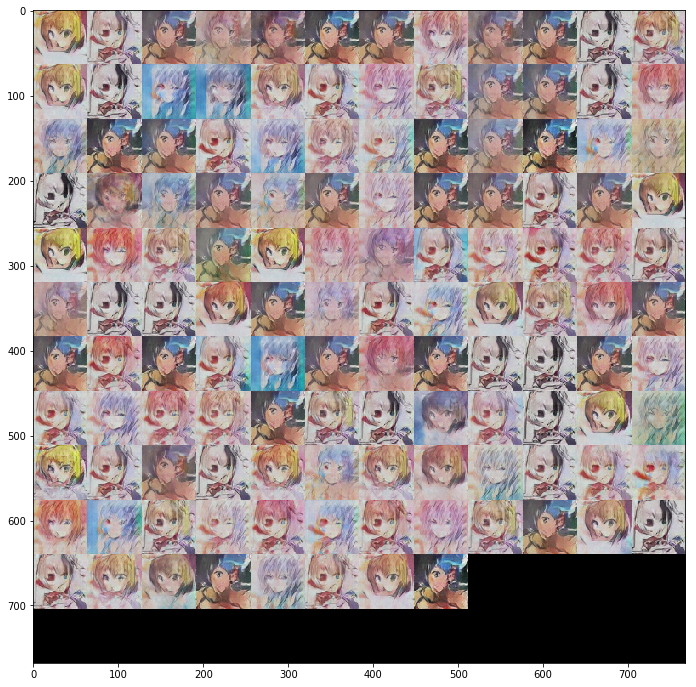This tutorial is the implementation of animeGAN in MXNET from https://github.com/jayleicn/animeGAN
To run the code:
1.Download the rec data from google drive
https://drive.google.com/drive/u/0/folders/1cl-lmAaKgN2Y6GoYER8J34BlbS4cDviM
The detail code to generate .rec can be found in ./data/
2. run the command under the root "python run_train"
The generated images at epoch 124 are like:
Useful links:
https://github.com/jayleicn/animeGAN
https://github.com/apache/incubator-mxnet/tree/master/example/gan
https://github.com/ChuckTan123/ganhacks
https://github.com/carpedm20/DCGAN-tensorflow
https://arxiv.org/abs/1511.06434
Learn GAN: The review paper in 2017:
https://arxiv.org/pdf/1711.05914.pdf
Notes:
GAN does not need to do further distribution assumption and can simply infer real-like samples from latent space. This powerful property leads GAN to be applied various applications such as image synthesis, image attribute editing, image translation, domain adaptation and even to other academic fields.
Why Generative Models:
By training generative models, it can produce real-like data which can be used in filling missing data in semi-supervised learning
Also, it can change image to other specific domain in supervised manner or unsupervised manner and even guide image to be transformed to possess specific attributes we want.
Fill the missing data point for semi-supervise learning.
GAN doesn't need to explicit the distribution of the data.
First of all, we represent G and D as deep neural networks to learn parameters rather than directly learning pθ(x) itself. Modeling with deep neural networks such as MLP is advantageous in that parameters of distributions can be easily learned through gradient descent using backpropagation and it does not need further distribution assumptions to do an inference, rather it can generate samples following pθ(x) through a simple feed-forward. But this practical implementation derives a gap with theory.
Applications using GAN:
1.Image Translation:
Image translation is translating images from domain X to images from other domain Y. Mainly,
translated images have dominants characteristic of domain Y maintaining attributes of before
translated. As in classical machine learning, there are supervised and unsupervised ways to conduct
image translation.
